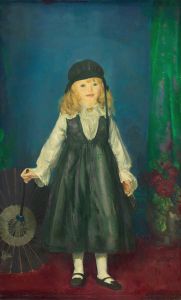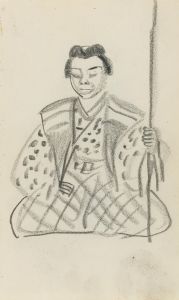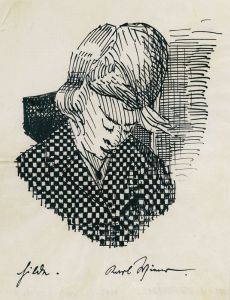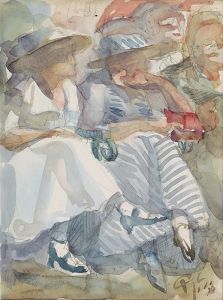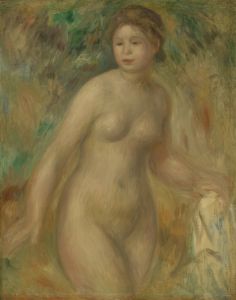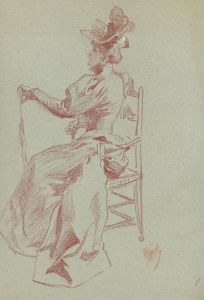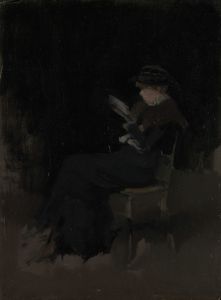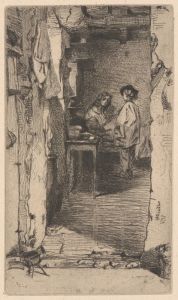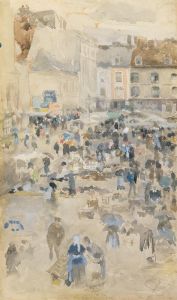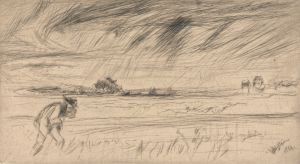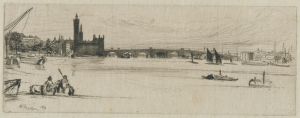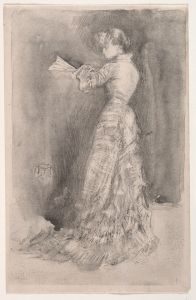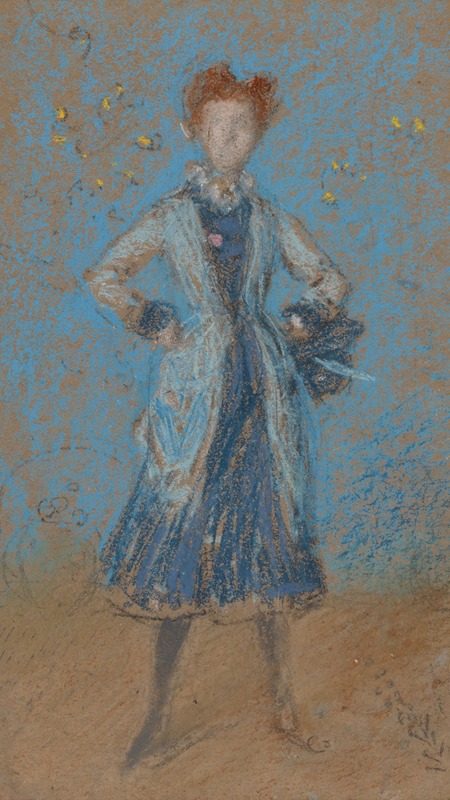
The Blue Girl
A hand-painted replica of James Abbott McNeill Whistler’s masterpiece The Blue Girl, meticulously crafted by professional artists to capture the true essence of the original. Each piece is created with museum-quality canvas and rare mineral pigments, carefully painted by experienced artists with delicate brushstrokes and rich, layered colors to perfectly recreate the texture of the original artwork. Unlike machine-printed reproductions, this hand-painted version brings the painting to life, infused with the artist’s emotions and skill in every stroke. Whether for personal collection or home decoration, it instantly elevates the artistic atmosphere of any space.
"The Blue Girl" is a painting by the American-born, British-based artist James Abbott McNeill Whistler. Whistler, known for his innovative and influential contributions to art in the late 19th century, created this work in 1879-1880. The painting is also known by its full title, "Harmony in Blue and Gold: The Little Blue Girl."
Whistler was a prominent figure in the Aesthetic Movement, which emphasized the visual and sensual qualities of art and design over practical, moral, or narrative considerations. His works often focused on color harmony and the arrangement of visual elements to create a pleasing effect. "The Blue Girl" is a prime example of this approach, showcasing Whistler's mastery of color and composition.
The painting depicts a young girl dressed in a blue dress, standing against a richly decorated background. The girl's attire and the intricate details of the background reflect Whistler's interest in Japanese art and design, which was a significant influence on his work during this period. The use of blue and gold in the painting highlights Whistler's skill in creating harmonious color schemes, a hallmark of his artistic style.
"The Blue Girl" was part of a series of works that Whistler referred to as "harmonies," where he sought to create a sense of balance and unity through the careful arrangement of colors and forms. This approach was influenced by his belief in "art for art's sake," a principle that advocated for the intrinsic value of art independent of any didactic, moral, or utilitarian function.
Whistler's technique in "The Blue Girl" involves delicate brushwork and a subtle blending of colors, which contribute to the overall sense of harmony and tranquility in the painting. The girl's serene expression and graceful pose further enhance the painting's aesthetic appeal.
The painting was exhibited at the Grosvenor Gallery in London, an alternative venue to the Royal Academy, which was known for showcasing avant-garde artists. Whistler's work received mixed reviews from contemporary critics, with some praising his innovative approach to color and composition, while others were less appreciative of his departure from traditional artistic conventions.
Today, "The Blue Girl" is recognized as an important work in Whistler's oeuvre and a significant example of the Aesthetic Movement. It is held in the collection of the Freer Gallery of Art in Washington, D.C., which houses an extensive collection of Whistler's works, thanks to the patronage of Charles Lang Freer, an American industrialist and art collector who was a close friend and supporter of the artist.
In summary, "The Blue Girl" by James Abbott McNeill Whistler is a notable painting that exemplifies the artist's commitment to color harmony and aesthetic beauty. Its creation during the late 19th century reflects Whistler's innovative approach to art and his influence on the Aesthetic Movement. The painting remains an important piece in the study of Whistler's artistic legacy and continues to be appreciated for its visual elegance and compositional sophistication.





